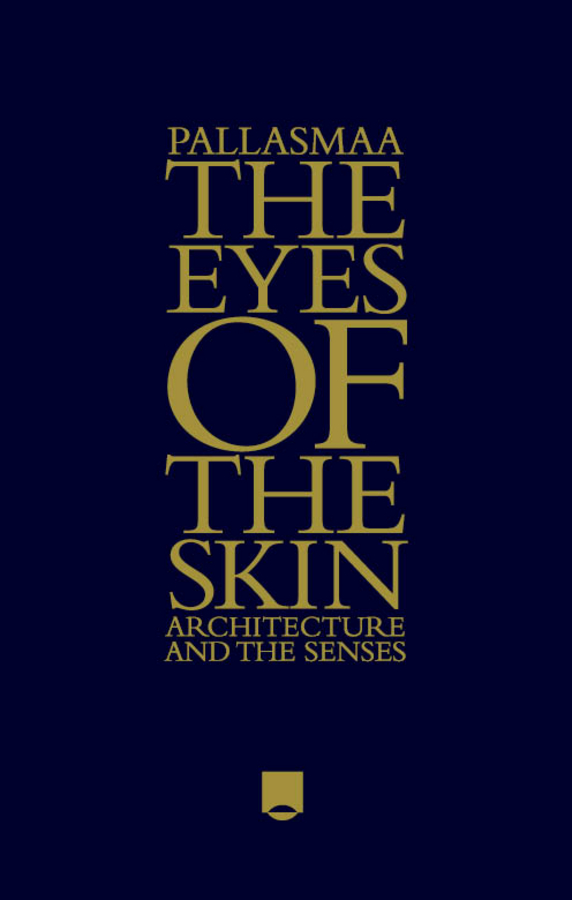Электронная книга: Juhani Pallasmaa «The Eyes of the Skin. Architecture and the Senses»

|
First published in 1996, The Eyes of the Skin has become a classic of architectural theory. It asks the far-reaching question why, when there are five senses, has one single sense– sight – become so predominant in architectural culture and design? With the ascendancy of the digital and the all-pervasive use of the image electronically, it is a subject that has become all the more pressing and topical since the first edition’s publication in the mid-1990s. Juhani Pallasmaa argues that the suppression of the other four sensory realms has led to the overall impoverishment of our built environment, often diminishing the emphasis on the spatial experience of a building and architecture’s ability to inspire, engage and be wholly life enhancing. For every student studying Pallasmaa’s classic text for the first time, The Eyes of the Skin is a revelation. It compellingly provides a totally fresh insight into architectural culture. This third edition meets readers’ desire for a further understanding of the context of Pallasmaa’s thinking by providing a new essay by architectural author and educator Peter MacKeith. This text combines both a biographical portrait of Pallasmaa and an outline of his architectural thinking, its origins and its relationship to the wider context of Nordic and European thought, past and present. The focus of the essay is on thefundamental humanity, insight and sensitivity of Pallasmaa’s approach to architecture, bringing him closer to the reader. This is illustrated by Pallasmaa’s sketches and photographs of his own work. The new edition also provides a foreword by the internationally renowned architect Steven Holl and a revised introduction by Pallasmaa himself. Издательство: "John Wiley&Sons Limited"
ISBN: 9781119943495 электронная книга Купить за 2181.42 руб и скачать на Litres |
Juhani Pallasmaa
Juhani Uolevi Pallasmaa (born
His exhibitions of Finnish architecture, planning and visual arts have been displayed in more that thirty countries and he has written numerous articles on cultural philosophy, environmental psychology and theories of architecture and the arts. Many of his articles are first featured in "ARK" ("The Finnish Architectural Review").
Among Pallasmaa's many books on architectural theory is "The Eyes of the Skin - Architecture and the Senses", a book that has become a classic of architectural theory and is required reading on courses in many schools of architecture around the world.
A selection of essays written by Pallasmaa, from the early years to more recent ones, has been translated into English and collated together in the book "Encounters - Architectural Essays" (Helsinki, 2005), edited by Peter MacKeith. The book was shortlisted for the
In 2006 Pallasmaa turned 70, and the occasion was marked by the publication of the book "Archipelago. Essays on Architecture", edited by Peter MacKeith. The collection contains essays by 23 authors, all with some connection to Pallasmaa or MacKeith. They include:
Pallasmaa is a member of the
A selection of architectural works designed by Juhani Pallasmaa
In terms of architectural production, the work Juhani Pallasmaa has undergone a shift during his career. His early career is characterised by concerns with rationalism, standardization and prefabrication. This was partly due to the influence of his mentor Professor Aulis Blomstedt, who was very much concerned with proportional systems and standardization. However, the key models were both Japanese architecture and the refined abstractions of
*
* Snow Show, Lapland (with
*
* Pedestrian and cycle bridge,
*
*
*
*
* Helsinki Old Market Hall, Helsinki, renovation 1986.
* Art Museum,
* Summer atelier of artist
* Moduli 225 (with
Quotes
"I see the task of architecture as the defence of the authenticity of human experience" (Juhani Pallasmaa, "Encounters")
References
* Juhani Pallasmaa, "Encounters. Architectural Essays". Edited by Peter MacKeith. Rakennustieto: Helsinki, 2005.
* Peter MacKeith (ed.), "Archipelago. Essays on Architecture". Rakennustieto: Helsinki, 2006.
* Juhani Pallasmaa, "The Eyes of the Skin. Architecture and the Senses". John Wiley: New York, 2005.
* Juhani Pallasmaa, "The Architecture of
External links
*http://www2.uiah.fi/opintoasiat/history2/pallas.htm
* [http://www.worldwhoswho.com/views/entry.html?id=pal-ed1-100402-1433 PALLASMAA Juhani Uolevi] International Who's Who. accessed
Источник: Juhani Pallasmaa
Другие книги схожей тематики:
| Автор | Книга | Описание | Год | Цена | Тип книги |
|---|---|---|---|---|---|
| Juhani Pallasmaa | The Eyes of the Skin. Architecture and the Senses | First published in 1996, The Eyes of the Skin has become a classic of architectural theory. It asks the far-reaching question why, when there are five senses, has one single sense– sight – become… — John Wiley&Sons Limited, электронная книга Подробнее... | 2181.42 | электронная книга |
См. также в других словарях:
The Idler (1758–1760) — This article is about the 18th century series of essays. For other publications called The Idler, see The Idler (disambiguation). The Idler was a series of 103 essays, all but twelve of them by Samuel Johnson, published in the London weekly the… … Wikipedia
architecture — /ahr ki tek cheuhr/, n. 1. the profession of designing buildings, open areas, communities, and other artificial constructions and environments, usually with some regard to aesthetic effect. Architecture often includes design or selection of… … Universalium
The Dunciad — Alexander Pope The Dunciad /ˈd … Wikipedia
Phenomenology (architecture) — Phenomenology is both a philosophical design current in contemporary architecture and a specific field of academic research, based on the physical experience of building materials and their sensory properties.Beginning in the 1970s, phenomenology … Wikipedia
Western architecture — Introduction history of Western architecture from prehistoric Mediterranean cultures to the present. The history of Western architecture is marked by a series of new solutions to structural problems. During the period from the… … Universalium
List of characters in the Camp Half-Blood series — This is a list of characters in the Percy Jackson the Olympians series and in the The Heroes of Olympus series. Contents 1 Main characters 1.1 Perseus Jackson 1.2 Annabeth Chase … Wikipedia

